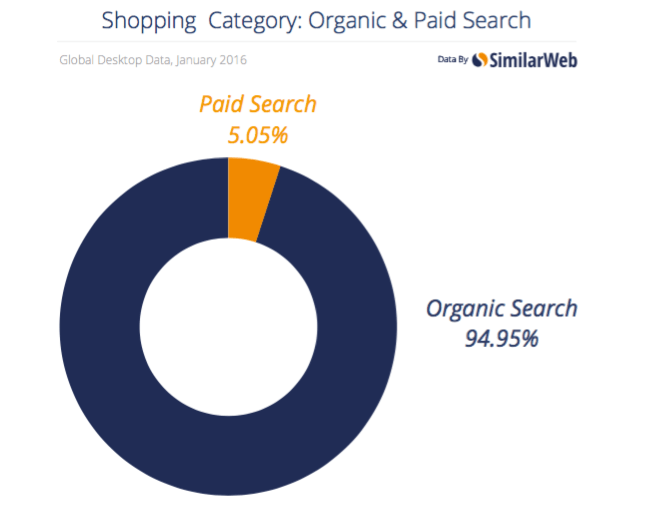When you’re busy juggling daily tasks, it’s easy to lose sight of what truly drives growth. The 80/20 Rule flips that script. It’s not about working harder; it’s about working smarter by identifying the 20% of activities that fuel 80% of your business success.
This principle isn’t just a productivity hack—it’s a shift in mindset that helps business owners break free from the cycle of being “busy” and start focusing on what actually matters.
Instead of getting lost in emails, meetings, and minor fires, the 80/20 Rule pushes you to step back and evaluate: What are the few key actions that generate the most significant results?
Whether it’s your top-performing products, high-value clients, or strategic decisions that move the needle, this rule helps you prioritize with purpose. If you’re serious about working on your business—not just in it—this is the framework that will help you reclaim your time, energy, and focus for the areas that drive real growth.
What is the 80/20 Rule?
The 80/20 Rule, also known as the Pareto Principle, is a simple yet powerful concept that suggests 80% of outcomes come from just 20% of efforts. Named after Italian economist Vilfredo Pareto, who observed that 80% of Italy’s land was owned by 20% of the population, this principle has since been applied to various fields, especially in business.
It highlights the imbalance that often exists between input and output, where a small portion of actions, resources, or decisions generate the majority of results.
In a business context, the 80/20 Rule helps leaders identify which activities, clients, or products contribute most to growth and profitability. It’s not a rigid formula but a guideline to recognize patterns—like realizing that 20% of your customers drive 80% of your revenue or that 20% of your marketing efforts yield the bulk of your leads.
Understanding this principle shifts the focus from doing more to doing what matters most. This makes it an essential mindset for working on your business instead of getting lost in the day-to-day grind.
Key Areas Where the 80/20 Rule Drives Business Growth
In business, not all efforts are created equal. The 80/20 Rule helps uncover the areas where focused attention yields the greatest returns. By identifying the activities, strategies, and relationships that generate the majority of your results, you can shift from being reactive to strategic.
This approach isn’t just about efficiency—it’s about achieving more with less, helping you focus on the strategies that deliver real results. Here are the key areas where the 80/20 Rule can make the biggest impact on your business.
1. Sales and Revenue Generation
In most businesses, a small percentage of clients or products account for the majority of revenue. The 80/20 Rule helps identify these top performers, allowing you to focus your sales efforts where they’ll have the most significant impact.
This means shifting from trying to please every customer to strategically nurturing relationships with your most profitable ones. Instead of spreading resources thin, businesses can concentrate on high-value clients who consistently contribute to revenue growth, ensuring efforts are both efficient and impactful.
Applying the 80/20 Rule in sales can involve:
- Analyzing Sales Data: Identify which products or services generate the most income.
- Prioritizing High-Value Clients: Focus on the top 20% of customers who drive repeat business.
- Refining Sales Strategies: Allocate time and resources to the most effective sales channels and tactics.
By focusing on the revenue-generating 20%, you create a more sustainable sales process, reduce wasted effort, and position your business for scalable growth.
2. Marketing Strategies
Not all marketing campaigns deliver equal results, and the 80/20 Rule helps pinpoint which efforts generate the most leads, conversions, and brand awareness. Many businesses waste time and money on strategies that yield minimal returns, simply because they’re not tracking what truly works.
By identifying the top-performing 20% of campaigns, channels, or content, you can focus your budget and creative energy where it counts, amplifying your marketing impact without increasing costs.
Consider how the 80/20 Rule applies to marketing:
- Channel Performance: Which platforms (social media, email, paid ads) drive the most traffic or conversions?
- Content Effectiveness: Identify blog posts, ads, or emails that consistently attract engagement.
- Audience Segmentation: Target the top 20% of your audience most likely to convert into loyal customers.
This strategic focus not only improves ROI but also helps streamline your marketing efforts, reducing the noise and allowing your message to reach the right audience at the right time.
3. Customer Relationship Management
Customer relationships are the backbone of any business, and the 80/20 Rule helps businesses identify and nurture those relationships that drive the most value. In many cases, a small group of customers contribute the majority of your revenue.
These high-value clients are often the ones who make repeat purchases, refer others, or provide long-term business stability.
By focusing on these key customers, you can develop tailored strategies that ensure loyalty and keep them engaged with your brand over time.
The key to applying the 80/20 Rule to customer management is to:
- Segment Customers: Identify the top 20% of customers who bring in the most revenue, and understand their behavior and preferences.
- Personalize Communication: Use this insight to send targeted messages that cater specifically to their needs, whether that’s special offers, exclusive content, or loyalty rewards.
- Deliver Exceptional Service: Focus on providing extraordinary experiences for these clients to keep them loyal, while streamlining processes for lower-value customers who require less attention.
By concentrating on retaining and growing relationships with your most valuable customers, you build a more sustainable and profitable business, turning your loyal base into a powerful engine for growth.
4. Productivity and Time Management
One of the biggest challenges for business owners and leaders is managing time effectively. The 80/20 Rule is invaluable here, as it helps you identify which tasks, projects, or activities yield the most significant outcomes, and which ones are just distractions.
Many entrepreneurs and business owners get bogged down with low-value tasks that consume time and energy, leaving little room for high-impact activities. By embracing the 80/20 Rule, you can eliminate the busywork and focus on the few things that will propel your business forward.
To maximize your productivity, you can:
- Prioritize High-Value Activities: Identify the 20% of tasks that contribute most to your business goals, such as strategic planning or high-priority client projects.
- Delegate and Automate: Delegate or automate the 80% of tasks that are less impactful, such as administrative work, scheduling, or repetitive customer inquiries, so you can focus on what really matters.
- Review and Optimize Regularly: Continuously evaluate which tasks are adding value and which ones are holding you back.
5. Product Development
Product development is a critical area where the 80/20 Rule can be a game-changer. In most businesses, only a handful of product features, designs, or offerings drive the majority of customer interest and sales. By focusing on these top performers, businesses can streamline their product development efforts, reduce costs, and improve overall customer satisfaction.
The 80/20 Rule encourages you to ask, which features or products do customers value the most? By identifying this core 20%, businesses can improve existing products, create new offerings that align with customer demand, and phase out underperforming features.
Here’s how you can apply the 80/20 Rule to your product development process:
- Customer Feedback Analysis: Use feedback from your top clients to identify the features or products that are most valuable to them, and consider making these elements more prominent or improving them further.
- Focus on Core Features: Instead of adding new features that might be interesting but not essential, prioritize the 20% of product features that drive 80% of your usage and sales.
- Eliminate Low-Impact Products or Features: Evaluate which products or features are not generating enough customer interest or revenue and consider discontinuing or improving them.
By applying the 80/20 Rule, your product development becomes more customer-centric, efficient, and profitable.
6. Operations and Efficiency
Operational efficiency is key to maintaining profitability as your business grows. The 80/20 Rule helps identify bottlenecks and inefficiencies that may be eating up resources and hindering overall performance. Often, businesses spend a disproportionate amount of time on low-impact operational tasks or struggle with inefficient workflows.
To apply the 80/20 Rule in operations:
- Identify Bottlenecks: Pinpoint the areas in your supply chain, production process, or customer service that are causing delays or excess costs, and focus on resolving these issues first.
- Streamline Workflows: Evaluate your internal workflows and eliminate unnecessary steps, automating where possible to speed up processes and reduce human error.
- Optimize Resource Allocation: Allocate your resources—whether time, money, or personnel—to the areas of operations that deliver the highest return.
Focusing on the most impactful operational tasks enables businesses to work smarter, reduce costs, and scale more effectively without getting bogged down in unnecessary complexity.
7. Human Resources and Talent Management
In most companies, a small percentage of employees contribute the majority of high-value work and innovation. Recognizing and rewarding these top performers is essential for maintaining motivation and driving productivity.
By applying the 80/20 Rule to human resource management, businesses can optimize their workforce and enhance overall efficiency.
A key aspect of this approach is talent development. Rather than providing blanket training for all employees, businesses should focus on equipping the top 20% of workers with advanced skills and leadership opportunities.
This ensures that the most capable employees continue to drive growth and inspire the rest of the team. Additionally, HR teams should identify recurring workforce challenges and implement targeted solutions to address them efficiently.
How to apply the 80/20 Rule to human resources:
- Recognize and Reward Top Performers: Provide incentives, promotions, and leadership opportunities to retain key employees.
- Optimize Training Programs: Focus on skills that have the highest impact on productivity and innovation.
- Address Recurring Workforce Issues: Resolve common HR challenges that affect large portions of the workforce.
By strategically managing human capital, businesses can enhance employee engagement and create a culture of high performance and continuous improvement.
8. Inventory and Supply Chain Management
Inventory and supply chain inefficiencies can significantly impact a company’s profitability. The 80/20 Rule suggests that a small percentage of products generate the majority of sales, while a large portion of inventory remains slow-moving or obsolete.
By focusing on high-demand products and optimizing supply chain logistics, businesses can reduce costs and improve operational efficiency.
One effective strategy is demand-based inventory management. Instead of maintaining excessive stock across all product lines, companies should prioritize the top 20% of items that contribute the most revenue.
This minimizes excess inventory, lowers holding costs, and prevents waste. Additionally, optimizing supplier relationships and logistics can further improve supply chain reliability and cost-effectiveness.
Key strategies for applying the 80/20 Rule to inventory management:
- Prioritize High-Performing Products: Focus on stocking and promoting best-selling items.
- Reduce Excess Inventory: Minimize storage costs by eliminating slow-moving products.
- Optimize Supplier Relationships: Work with key suppliers to ensure cost efficiency and timely delivery.
By concentrating on the most valuable aspects of inventory and supply chain management, businesses can improve profitability and enhance overall efficiency.
Steps to Implement the 80/20 Rule in Your Business
Analyze Data to Identify Patterns
Applying the 80/20 Rule starts with a deep analysis of data to uncover which areas of the business contribute the most value. This involves reviewing financial reports, customer analytics, sales data, and operational workflows. These will determine which clients, products, or activities generate the majority of revenue and efficiency.
Using tools like CRM software, sales dashboards, and business intelligence platforms can help visualize patterns and trends. Once identified, businesses can make data-driven decisions to optimize performance by focusing efforts where they yield the highest returns.
Focus on High-Value Clients/Products
Once the data is analyzed, the next step is to prioritize the most profitable clients, products, and services. Instead of spreading resources across all areas, businesses should concentrate on what delivers the greatest impact.
By offering exclusive promotions to high-value customers or improving best-selling products, businesses can increase profitability without additional effort. This targeted approach enhances customer satisfaction and strengthens brand loyalty.
Optimize Resources and Minimize Waste
Eliminating inefficiencies and streamlining operations is crucial for maximizing the benefits of the 80/20 Rule. This involves reducing time spent on low-impact tasks, cutting unnecessary expenses, and reallocating resources to the most productive areas.
Automation, outsourcing, and workflow optimization are powerful methods for improving efficiency. Companies should also regularly assess their processes to identify and remove any redundancies that drain valuable time and money.
Regularly Review and Adjust Strategies
The business landscape constantly evolves, and what works today may not be as effective tomorrow. Regularly reviewing and refining strategies ensures continued success in applying the 80/20 Rule.
Businesses should establish key performance indicators (KPIs) to measure the effectiveness of their optimized strategies and make necessary adjustments based on market trends and customer feedback.
Challenges and Limitations of the 80/20 Rule
Over-Reliance on the Rule Without Context
While the 80/20 Rule is a powerful guideline, it should not be applied rigidly without considering the unique dynamics of a business.
Blindly cutting resources to the bottom 80% without a thorough analysis can lead to unintended consequences, such as service gaps or reduced innovation.
Misinterpretation Leading to Poor Decisions
A common mistake is assuming that 80/20 is a strict formula rather than an observation of trends. Misinterpreting the rule can result in neglecting essential aspects of the business that may not be immediately profitable but contribute to long-term success.
The Risk of Neglecting Smaller but Essential Tasks
Smaller tasks and lower-revenue customers still play a crucial role in business operations. Completely ignoring these aspects can cause imbalances and inefficiencies. Businesses must strike a balance between prioritization and maintaining essential functions.
Final Thoughts
The 80/20 Rule is a valuable tool for businesses seeking to maximize efficiency and profitability. By identifying high-impact areas and optimizing resources accordingly, companies can achieve sustainable growth.
However, the key to long-term success is continuous evaluation and adaptation. The most effective businesses regularly reassess their priorities, ensuring they are consistently directing time, money, and energy to the areas that yield the greatest results.
By applying the 80/20 Rule strategically, businesses can maintain a competitive edge and drive lasting success.
Related:
- Empower Your Journey: A Complete Guide to Future-Proof Entrepreneurship
- Innovative Entrepreneur: Key Traits and Tips for Success
- High Ticket Digital Marketing: How to Drive Big Sales Online

We empower people to succeed through information and essential services. Do you need help with something? Contact Us.
Want a heads-up once a week whenever a new article drops?







